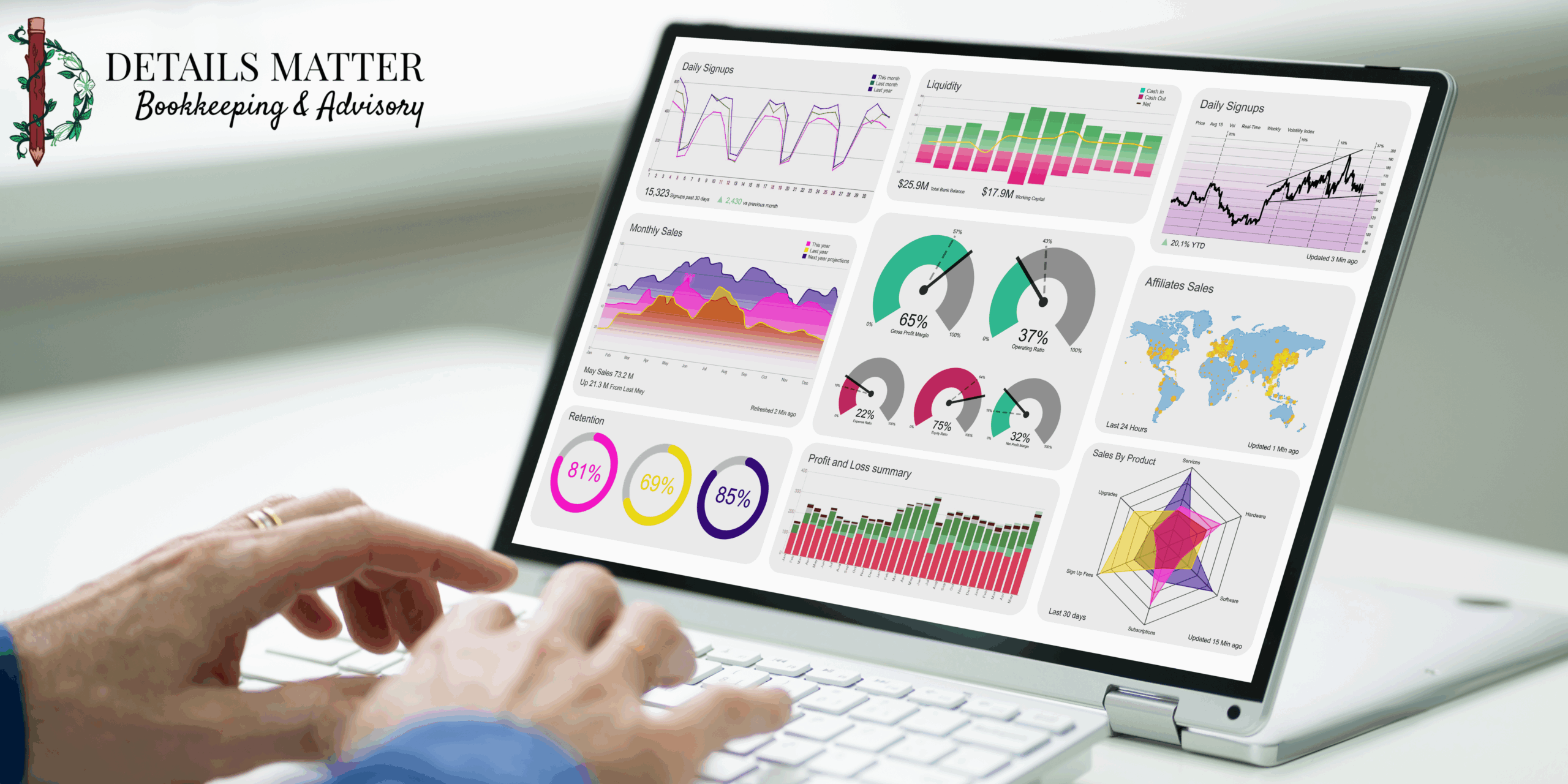When you’re running a small business, the to-do list never ends. You’re juggling sales, staffing, operations—and somewhere in there, you’re supposed to “know your numbers.” But which numbers really matter? KPIs for small businesses are your financial dashboard. They’re the key metrics that help you keep a pulse on how your business is doing, spot red flags early, and make smarter decisions moving forward.
Let’s break down what KPIs are, which ones actually matter, and how you can use them (without getting buried in spreadsheets).
What Are KPIs, Exactly?
Key Performance Indicators are measurable numbers that show how well your business is performing. Some are financial, like profit margin. Others are operational, like client retention. The best ones help you answer questions like:
- Are we making money?
- Are we pricing things correctly?
- Is our team operating efficiently?
- Are we set up to grow?
If you’ve ever looked at your bank balance and thought, “It feels like we’re doing well, but I’m not sure”—tracking KPIs will give you clarity.
Common KPIs Every Small Business Owner Should Know
You don’t need to track everything—just the numbers that give you the clearest picture of your financial health. Here are a few core KPIs to start with:
Gross Profit Margin
This tells you how much you’re keeping after covering your cost of goods or services.
🔣Formula: (Revenue – Cost of Goods Sold) ÷ Revenue
A healthy margin means your pricing and costs are working in your favor.
Net Profit Margin
This is what’s left after all expenses—rent, payroll, software, everything.
🔣Formula: Net Profit ÷ Revenue
This number is key for understanding if you’re truly profitable or just breaking even.
Accounts Receivable Turnover
How quickly are you getting paid? This tracks how efficiently your business collects on invoices.
A low turnover might mean cash flow issues are brewing.
Current Ratio
This measures your ability to cover short-term obligations.
🔣Formula: Current Assets ÷ Current Liabilities
It’s a good gut check for liquidity (aka: are you going to have enough cash on hand?).
Labor Margin
Labor can be one of your biggest expenses.
🔣Formula: (Revenue – Direct Labor Costs) ÷ Revenue
Tracking this helps you make better staffing decisions and spot overstaffing or inefficiencies.
Why KPIs Matter
Here’s the thing: your gut is not a reliable financial system.
You might feel busy or “booked and blessed,” but if your margins are shrinking or your receivables are out of control, that momentum won’t last.
KPIs help you:
- Make decisions backed by data, not guesswork
- Catch problems early, before they turn into cash flow crises
- Set goals based on reality, not wishful thinking
- Communicate with your team or investors more effectively
And when you know your KPIs, you can actually answer that dreaded question from your CPA: “How’s business?”
How to Get Started (Without Overwhelm)
Start small. Pick 2–3 KPIs that matter most to your business model. If you’re in retail, maybe that’s gross margin and inventory turnover. If you’re a service provider, focus on labor margin and accounts receivable turnover.
Track them monthly—or even quarterly—and look for trends, not perfection. You don’t have to build a complicated dashboard to get value out of this. A well-structured spreadsheet or working with your bookkeeper is often all it takes.
Want Help Understanding Your KPIs?
If you’re not sure where to begin, or if you want to start using your financials to actually drive decisions, we can help. At Details Matter, we don’t just categorize transactions—we help you understand what your numbers are saying. Our Elevate package might be just the thing for you!
📅 Schedule a discovery call, and let’s make your financial data work for you, not against you.
Because when you understand your KPIs, you’re not just running a business—you’re steering it with confidence.

